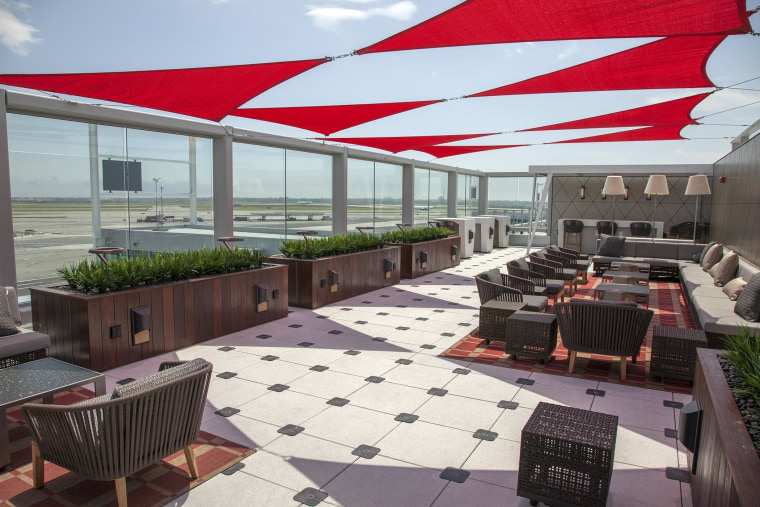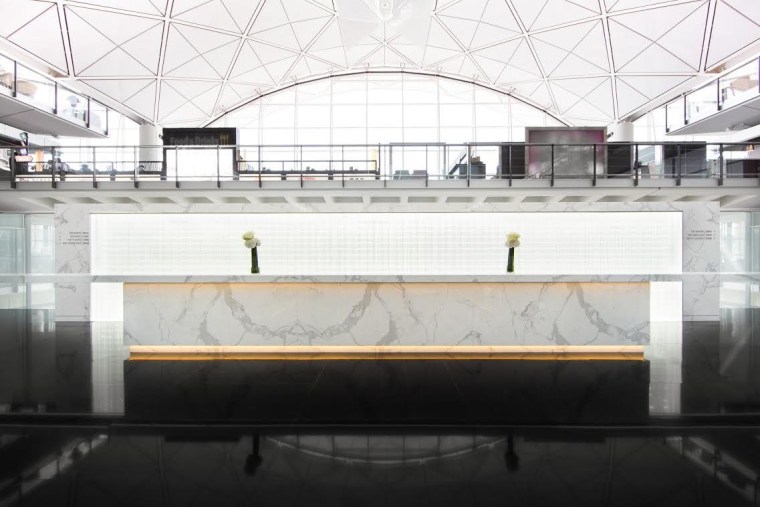Airlines looking to woo profitable premium-class passengers have been creating an ever-better luxury experience in the sky — and now also on the ground.
Over the past year and a half, more than a dozen airlines have opened, upgraded or revamped their lounges. The list includes new lounges for the major alliances (Star Alliance, oneworld and SkyTeam) in the new international terminal at Los Angeles International Airport, 22,000 square-feet of lounge space for United Airlines’ premium passengers at Heathrow Airport’s new Terminal 2, and a 5,000-square-foot Lufthansa lounge at Newark International Airport.
Sign up for top Travel news direct to your inbox.
“Airlines have been improving their business class in terms of seats and service and, as part of these upgrade programs, also investing in their lounges in order to offer their most valuable passengers a premium end-to-end experience,” said Raymond Kollau, founder of airlinetrends.com.
At many of these lounges, the focus is on amenities. Perks at Lufthansa’s first-class terminal in Frankfurt, Germany, for example, include a cigar lounge, personal assistants, day beds and a bathroom soaking tub that comes with champagne — and a rubber ducky.
“In my opinion, it’s the world's greatest lounge,” said Houston-based software support specialist Joshua MacDonald, who’s willing to cash in extra frequent-flier miles to gain access.
In 2013, Delta Air Lines opened new lounges with outdoor decks at New York’s JFK airport and at Hartsfield-Jackson Atlanta International Airport. At Hong Kong International Airport, Cathay Pacific opened its sixth lounge — The Bridge, which offers shower suites and freshly baked bread and pizzas.

The level of luxury in a lounge also influences Lelde Muehlenbach’s choice of carriers and seat class. The painter and writer from Edmonton, Alberta, is a frequent domestic and international traveler who has been to Istanbul eight times.
“I would purchase a business ticket just to insure access to the Turkish Airlines lounge at the Istanbul airport,” she said.
At 60,000 square feet, the airline’s flagship lounge was updated and expanded earlier this year and is one of the largest in the world. The lounge includes a library, billiard hall and golf simulator. Travelers can also find massages, made-to-order meals, a cinema and a kids’ play room.
“The bar has been raised for these lounges to deliver a premium experience.”
Airport improvements are among several factors fueling the one-upmanship in airline lounges, experts say, because wine bars, massage kiosks, white-tablecloth restaurants, powered work spaces, free Wi-Fi and museum-quality art are no longer uncommon airport amenities.
“That means if you have a lounge, it better be better than the airport terminal itself,” said Tyler Dikman, CEO of LoungeBuddy.com, an app that lists and reviews airport lounges. “The bar has been raised for these lounges to deliver a premium experience.”
During the recent global financial crisis, fewer passengers were traveling for business. But with the improvement in the economy, spending on business travel, especially international travel, is on the rise. The Global Business Travel Association predicted U.S. spending on international outbound travel would jump 12.5 percent in 2014 to $36.7 billion, after just 1.8 percent growth in 2013 and what it called an "anemic" 0.8 percent expansion in 2012.
“Intense competition for the global business traveler ... has upped the ante,” said Chris McGinnis, editor of the TravelSkills blog.
“Given what elite travelers pay for tickets now, good lounges — and constantly improving lounges — are the cost of entry if you want to keep their business,” said Joe Brancatelli, publisher of business travel website JoeSentMe.com.
Another factor is competition from shared-use airline lounges, where access is offered to those willing to pay a per-use fee — from $20 to $50, and sometimes more — or to those with certain membership or credit cards.
Common in many international airports, “the concept entered the U.S. market in recent years and has been widely accepted by passengers and airports as an excellent complement to the traditional airline lounge product,” said Nancy Knipp, senior vice president of Airport Lounge Development, which operates “The Club” lounges at five U.S. airports. A sister company, Priority Pass, provides access for card holders to lounges in 400 cities worldwide.
Some other shared-use lounges travelers may spot in airports are operated by Swissport-owned Servisair and Airspace Lounge, by Plaza Premium Lounge and by American Express, which operates Centurion lounges in the Las Vegas and Dallas/Fort Worth airports.
Price and access criteria for both airline and independent lounges can vary widely, but overall “competition is good,” said Brancatelli, “and that mean the lounges will get better.”
